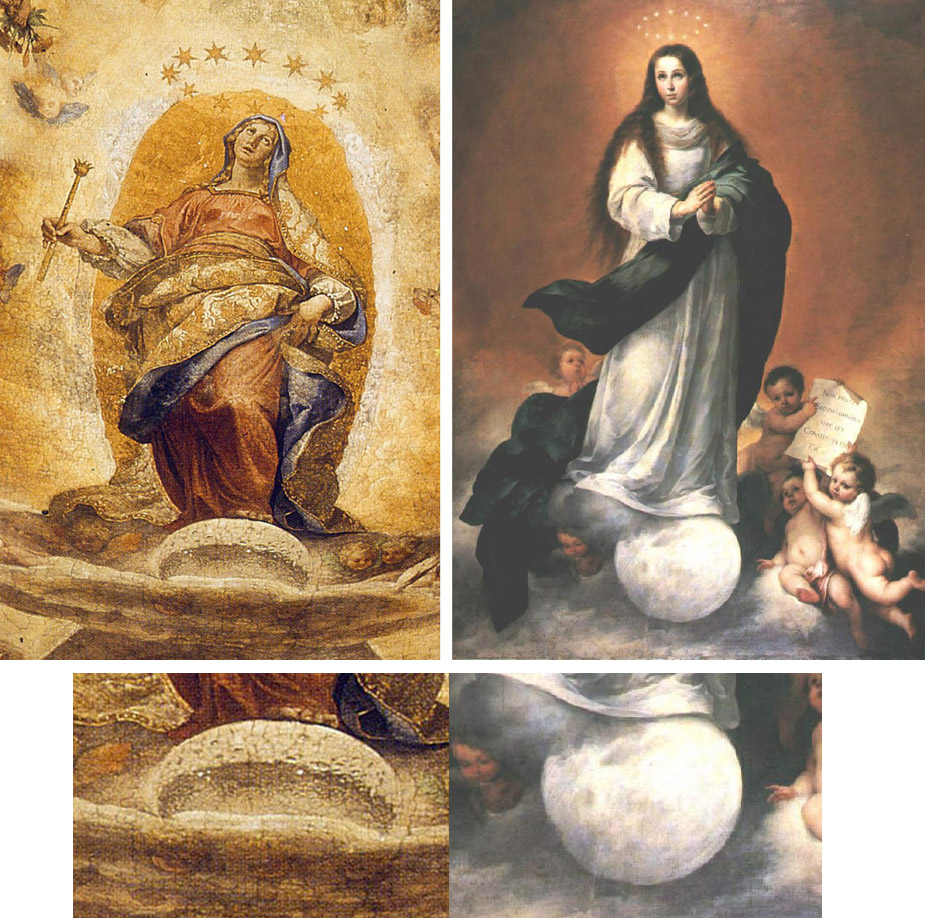June 8, 2013
Real And Ideal Moons

Cigoli's Assumption of the Virgin (1612), left; and Murillo's Immaculate Conception (ca. 1660), right
I just discovered an interesting intersection of art and lunar science. Back in 1999, first year students at Princeton University participated in a seminar that discussed parallel developments in artistic and scientific thought from the Renaissance to the present day. One of the students, Dylan Cooke, looked at how Galileo's telescopic observations of the Moon influenced Lodovico Cardi, a painter known as Cigoli. Cooke pointed out that traditional paintings of the Virgin Mary - such as the one on the right - showed her standing on a sphere that represented the Moon, which was considered to be pure and thus a fitting symbol for the Virgin. But Cigoli's last painting (left) in the dome of Santa Maria Maggiore, Rome, was done in 1612, two years after his friend Galileo's observations of the Moon, and depicts a crescent Moon with a terminator made irregular with craters just as in Galileo's lunar drawings. It is reported that from the dome of the chapel Cigoli used for several months the Galilean telescope. There are two reasons why I should have known of Cigoli's Moon-inspired Madonna. First, the painting and its lunar connection are described in the brilliant book The Moon and the Western Imagination which I read 13 years ago. And secondly, I visited Santa Maria Maggiore when in Rome in 2010 but didn't appreciate the Galilean connection as I looked up at just another Mary.
Chuck Wood
PS: Since Murillo's Mary was painted many years after Galileo's discovery that the Moon wasn't featureless I wonder if the spots on the spherical Moon represent stylized maria or just dark reflections of clouds and Mary's dress.
Yesterday's LPOD: Moon-Chased
Tomorrow's LPOD: Terminator Tales
COMMENTS?
Register, Log in, and join in the comments.



